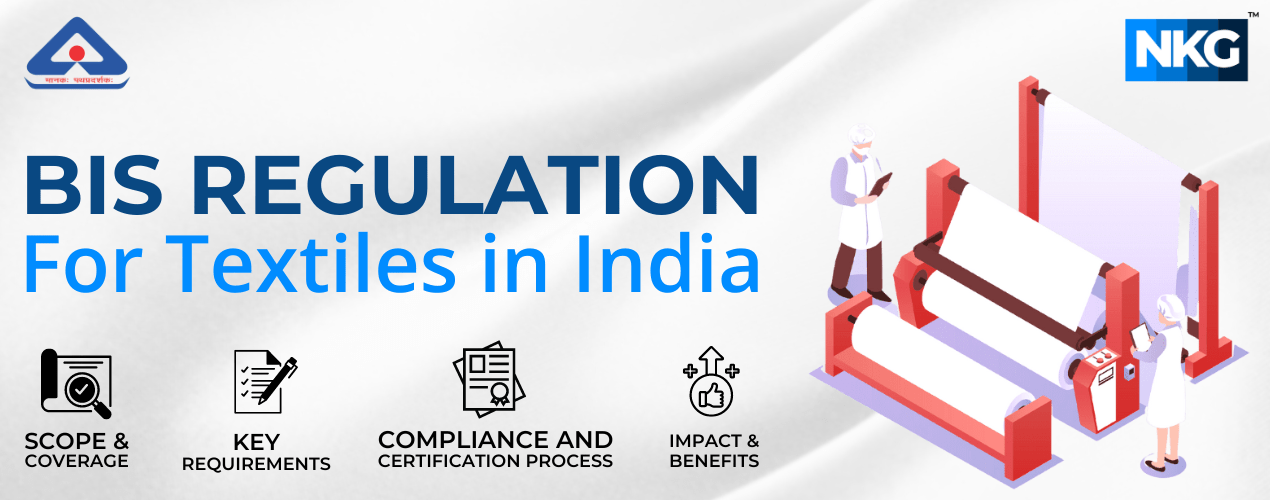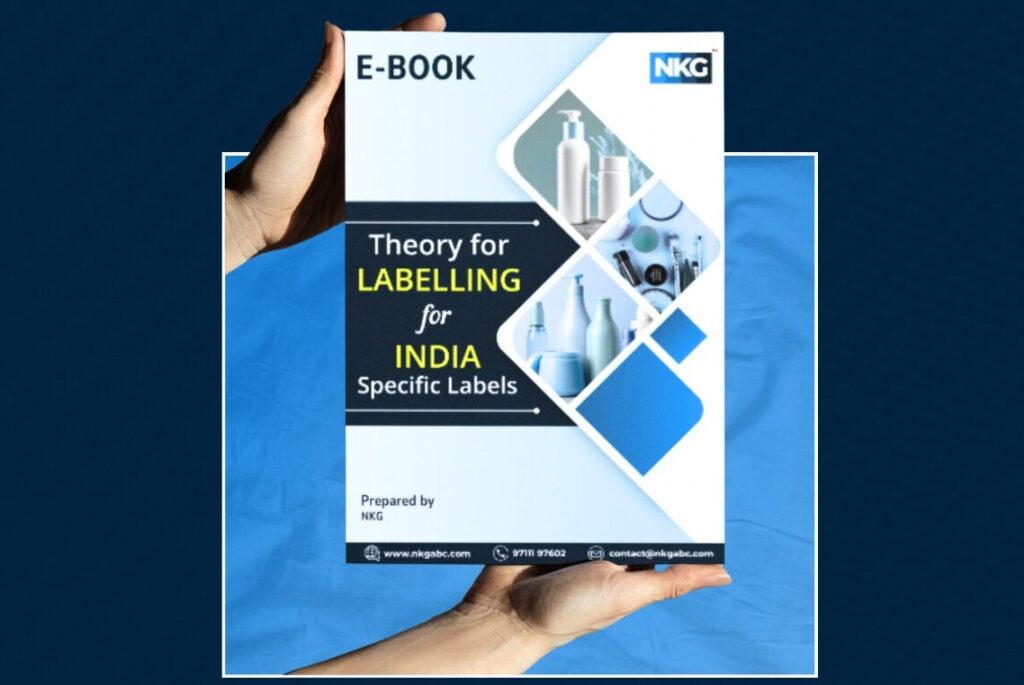Introduction
The Indian textile industry has received a major boost with the introduction of a new regulation by the Ministry of Textiles, Government of India. This regulation, titled the “Protective Textiles (Quality Control) Order, 2022,” aims to ensure the safety and quality of textile products used in various applications, including furniture manufacturing. The order mandates that specific textile products used in non-domestic furniture must comply with the corresponding Indian Standards (IS) and bear the Standard Mark issued by the Bureau of Indian Standards (BIS).
The BIS, established under the Bureau of Indian Standards Act, of 2016, is the national standardization body responsible for harmonizing standards among various industries in India. The new regulation highlights the government’s commitment to promoting safe and high-quality textile products, particularly in sectors where public safety is a paramount concern.
Protective Textiles (Quality Control) Order, 2022
The use of textiles in furniture manufacturing has been a long-standing practice, with upholstery fabrics playing a crucial role in enhancing the aesthetic appeal and comfort of furniture pieces. However, the potential fire hazards associated with certain textile materials have raised concerns among regulatory bodies and consumers alike.
In recent years, several incidents involving fires in public spaces, such as hotels, restaurants, and office buildings, have highlighted the need for stringent safety measures. These incidents have not only resulted in significant property damage but have also put human lives at risk.
To address these concerns, the Ministry of Textiles, in consultation with the BIS, has introduced the “Protective Textiles (Quality Control) Order, 2022.” This order aims to regulate the quality and safety of textile products used in non-domestic furniture, ensuring that they meet the required standards for fire resistance, durability, and other critical performance parameters.
Scope of the Protective Textiles (Quality Control) Order, 2022
The “Protective Textiles (Quality Control) Order, 2022” applies to a wide range of textile products used in non-domestic furniture, including:
Sl. No. | Goods or article | Indian Standard (IS) | Title of Indian Standard |
(1) | (2) | (3) | (4) |
1 | Curtains and Drapes | IS 15741 : 2007 | Textiles – Resistance to ignition of curtains and drapes – Specification |
2 | IS 15768 : 2008 | Textiles – Resistance to ignition of upholstered composites used for non-domestic furniture – Specification | |
3 | Protective clothing for firefighters | IS 16890 : 2018 | Textiles – Protective Clothing for Firefighters – Specification |
4 | Protective gloves for firefighters | IS 16874 : 2018 | Textiles – Protective Gloves for Firefighters – Specification |
5 | Protective clothing for industrial workers exposed to heat | IS 15748 : 2022 | Textiles – Protective clothing for Industrial workers exposed to heat (excluding firefighters’ and welders’ clothing) |
6 | Clothing made of limited flame spread materials and material assemblies affording protection against heat and flame | IS 15742 : 2007 | Textiles – requirements for clothing made of limited flame spread materials and material assemblies affording protection against heat and flame – specification |
7 | High visibility Warning Clothes | IS 15809 : 2017 | High visibility warning clothes – Specification (first revision) |
8 | Protective Clothing for use in welding and allied processes | IS 16655 : 2017 | Textiles – Protective clothing for use in welding and allied processes |
9 | Tactical 3 point sling | IS 16725 : 2018 | Textiles – Tactical 3 point sling universal – Specification |
10 | Pouch for ammunition and grenades made of disruptive pattern nylon-66 | IS 16726 : 2018 | Textiles – Pouch for ammunition and grenades made of disruptive pattern nylon 6 6 – Specification |
11 | Bullet resistant jackets | IS 17051 : 2018 | Textiles – Bullet resistant jackets – Performance requirements |
12 | Water-proof multipurpose rain poncho | IS 17286 : 2019 | Textiles – Water-proof multipurpose rain poncho with convertibility as bivouac – Specification |
Key Requirements
The “Protective Textiles (Quality Control) Order, 2022” outlines several key requirements for textile products used in non-domestic furniture:
- Ignitability: The textile products must meet specific ignition resistance requirements to minimize the risk of fire propagation. This includes tests such as the smoldering cigarette test, match flame equivalent test, and crib test, as outlined in the relevant Indian Standards.
- Durability of Flame Retardant Property: Textile products treated with flame retardant finishes must demonstrate durability against factors such as washing and exposure to environmental conditions, ensuring that the fire-resistant properties remain effective throughout the product’s lifespan.
- Toxicity Index: Certain textile products, particularly those used in high-risk environments, must meet stringent toxicity index requirements to minimize the release of harmful substances during combustion.
- Visibility Due to Smoke Released on Combustion: For applications where visibility is crucial, such as emergency exits or high-traffic areas, textile products must comply with specific requirements for smoke release and visibility during combustion.
- Additional Requirements: Depending on the specific application, textile products may be subjected to additional tests and requirements, such as resistance to heat, water repellency, or bullet resistance, as outlined in the relevant Indian Standards.
Compliance and Certification Process
To ensure compliance with the “Protective Textiles (Quality Control) Order, 2022,” manufacturers and suppliers of textile products used in non-domestic furniture must follow a well-defined certification process. This process involves the following steps:
- Application: Manufacturers or suppliers must submit an application to the BIS, providing relevant details about their products, manufacturing processes, and quality control systems.
- Assessment: The BIS will conduct an assessment of the applicant’s manufacturing facility, testing capabilities, and quality management systems to evaluate their compliance with the relevant Indian Standards.
- Testing and Evaluation: Representative samples of the textile products will be subjected to various tests and evaluations as per the specified Indian Standards. These tests may be conducted at the BIS-recognized laboratories or the applicant’s in-house testing facilities, if approved.
- Licensing: Upon successful completion of the assessment and testing process, the BIS will grant a license to the manufacturer or supplier, allowing them to use the Standard Mark on their textile products.
- Surveillance: The BIS will conduct periodic surveillance audits and product testing to ensure continued compliance with the Indian Standards and the terms and conditions of the license.
Role of the Bureau of Indian Standards (BIS)
The BIS plays a pivotal role in the implementation and enforcement of the “Protective Textiles (Quality Control) Order, 2022.” As the national standardization body, the BIS is responsible for:
- Establishing and maintaining the relevant Indian Standards for textile products used in non-domestic furniture.
- Conducting assessments, testing, and certification of textile products to ensure compliance with the specified standards.
- Issuing licenses to manufacturers and suppliers for the use of the Standard Mark.
- Carrying out surveillance activities, including audits and product testing, to ensure ongoing compliance.
- Taking appropriate actions, including penalties, in cases of non-compliance or misuse of the Standard Mark.
The BIS’s involvement in this process ensures that textile products used in non-domestic furniture meet the required safety and quality standards, providing consumers and stakeholders with confidence in the products they purchase or use.
Impact and Benefits
The implementation of the “Protective Textiles (Quality Control) Order, 2022” is expected to have far-reaching impacts and benefits for various stakeholders:
- Consumer Safety: By mandating compliance with safety standards, the regulation aims to enhance consumer safety by reducing the risk of fires, smoke inhalation, and other hazards associated with non-compliant textile products.
- Industry Competitiveness: The standardization of textile products used in non-domestic furniture will level the playing field for manufacturers and suppliers, promoting fair competition based on quality and safety standards.
- Export Opportunities: Compliance with internationally recognized standards can open up new export opportunities for Indian textile manufacturers, as their products will meet the quality and safety requirements of global markets.
- Regulatory Compliance: The regulation ensures that textile products used in non-domestic furniture comply with relevant safety regulations, reducing the risk of non-compliance and associated penalties.
- Brand Reputation: Manufacturers and suppliers that adhere to the BIS standards and obtain the Standard Mark can enhance their brand reputation, positioning themselves as providers of high-quality and safe products.
- Environmental Sustainability: Certain Indian Standards may include requirements related to the environmental impact of textile products, promoting sustainable manufacturing practices and reducing the carbon footprint of the industry.
Implementation Timeline
The “Protective Textiles (Quality Control) Order, 2022” will come into force 180 days after its publication in the Official Gazette. This grace period allows manufacturers and suppliers to prepare for compliance and obtain the necessary certifications from the BIS.
During this transition period, the Ministry of Textiles and the BIS are expected to conduct awareness campaigns and provide guidance to industry stakeholders to ensure a smooth implementation of the regulation.
Conclusion:
The “Protective Textiles (Quality Control) Order, 2022” represents a significant step towards enhancing the safety and quality of textile products used in non-domestic furniture in India. By mandating compliance with Indian Standards and the use of the Standard Mark issued by the BIS, this regulation aims to protect consumers, promote fair competition, and strengthen the competitiveness of the Indian textile industry in both domestic and global markets.
The regulation’s success will depend on the collaborative efforts of various stakeholders, including the Ministry of Textiles, the BIS, textile manufacturers and suppliers, furniture manufacturers, industry associations, testing and certification bodies, and consumers. By working together, addressing challenges, and embracing the benefits of standardization, the Indian textile industry can position itself as a leader in providing safe, high-quality, and globally competitive textile products for non-domestic furniture applications.







